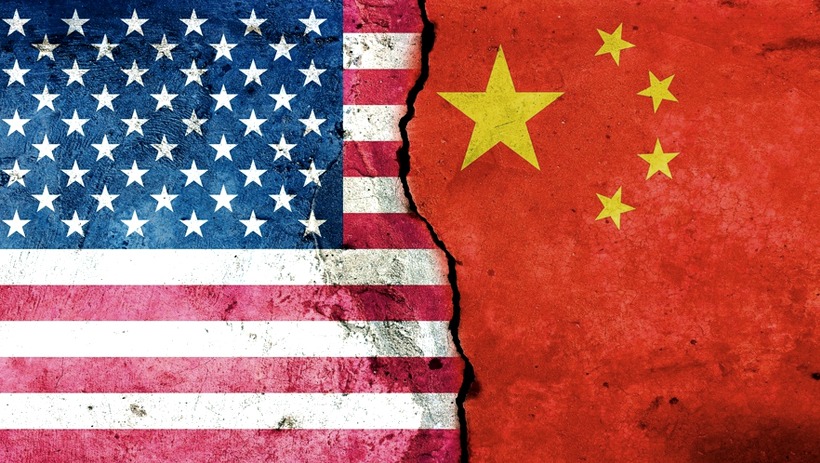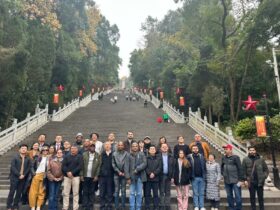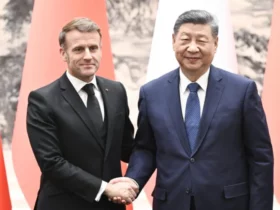Win – win negotiations
The United States and China signed off on the first phase of a trade deal following extensive negotiations. Speaking at the signing ceremony at the White House, US President Trump stressed the deals importance and said that the two countries are working together to fix the mistakes of the past. Chinese Vice Premier Liu agreed, and stated that cooperation will continue. Experts say the move will improve global stability.
Donald Trump and Liu He signed the first-phase of a trade agreement at a ceremony in the White House in Washington in front of about 200 people. Experts say that the deal proves that economic and trade disputes between China and the United States can be resolved through negotiations. They also stress that the trade war had negatively affected not only the two countries, but also the world economy, noting that the deal is in the world’s best interests.
The U.S. decision to confront China directly over its rising role, rather than competing directly for influence, may alienate some potential allies, which may be anxious about picking a fight with Beijing, FP’s @columlynch reports.https://t.co/uvj77eLgKx
— Foreign Policy (@ForeignPolicy) January 23, 2020
Trump’s turning point
In his speech at the ceremony, Trump said the deal was a turning point, and the US would be moving toward fair and mutual trade with China: “Today we are taking a very important step that has not been taken before, by signing the first-phase trade deal with China. This is much bigger than any previous deal” and added, “Today we are fixing the mistakes of the past.” Trump also said that he will go to China to sign off on the second-phase deal in the near future and that the two countries have already begun to negotiate this next step.
“China’s viewed as a developing nation, India’s viewed as a developing nation… as far as I’m concerned we’re a developing nation too”—Donald Trump says the WTO has been “very unfair” to the U.S., during a press conference in Davos https://t.co/XKjtHeqOKW #wef20 pic.twitter.com/HQ7CKJT50D
— Bloomberg (@business) January 22, 2020
China: Dialogue will continue
Liu He stressed the importance of the deal, saying that trade deal is a sign of a new era and that he believes cooperation will continue. Liu also read a letter that was addressed to Trump from Chinese President Xi Jinping. Xi Jinping said that the deal is an example of how the two countries can solve their problems through dialogue.
The first step has been taken
James Moore, CEO of the Washington Institute for Business, Government and Society, said the first-phase trade deal between China and the United States is an important step towards working out serious problems. Pointing out that the deal will have positive effects on both the countries involved and the rest of the world, Moore said: “Dialogue between the United States and China is very important. The two sides have agreed, with an honest approach to solve the problems and the challenges they face. I think both of the sides have taken the first step in the right direction.”
The content of the deal
The first phase of the nine-part deal covers issues such as copyright and patent rights, technology transfers, food and agricultural products, financial services, exchange rates and transparency and the ever-expanding trade and bilateral evaluation disputes. The abolition of additional customs taxes and issues of compliance with trading figures are also mentioned in the deal, as were issues around WTO rule, which China insisted on. At the same time, some of the US’ core demands were met directly in the deal. Some of the disputes that are the subject of controversy between the United States and China were not discussed in the deal. The issue of heavy subsidies and technology transfers to Chinese state-run companies, for instance, has yet to be discussed. These issues will be addressed in the second-phase of the deal.
Whoever violates the terms of the agreement will be subject to sanctions
If either of the two sides commits acts which violate the terms of the deal, sanctions will be imposed. According to the text of the deal, China has agreed to buy US goods worth of $33 billion this year, and $44.8 billion in 2021. Beijing will also buy $12.5 billion worth of foodstuff in 2020, and another $19.5 billion in the next year. China will increase its energy imports from the United States to $50 billion over the next two years, with $18.5 billion being spent this year and another $33.9 billion next year. According to the deal, China will also purchase US services worth of $12.8 billion and another $25.1 billion next year. In return, the United States will halve the high tariffs it has imposed on Chinese products recently. With the first-phase trade deal announced on December 13, Trump agreed to suspend the plans for new tariffs on products imported from China and lower some customs taxes, while Beijing agreed to increase imports of agricultural products from the United States.
Policies based on heightened tensions are counterproductive
After Trump raised customs taxes In August 2019, the US Department of the Treasury labeled China a currency manipulator, which sparked a huge backlash from Beijing. The International Monetary Fund (IMF) and several other international investigators said that China was not guilty of any such thing, and that the fluctuation in the Chinese Yuan was a result of the US’ trade war. These US’ aggressive moves have affected the global economy and disrupted stability, invoking a strong reaction from European countries. China, on the other hand, has pursued a balanced policy. The General Administration of Customs of the People’s Republic of China shared the information that the country’s foreign trade in 2019 increased by 3.4%. Although trade between China and the United States fell by 10.7%, imports rose by 5%. These numbers show that China has proven to be resilient against Washington’s economic attacks.
A win – win scenario comes out on top
The US signed off on the first-phase trade deal as a result of both China’s resilience, its own economic stagnation and serious international reactions, proving that its trade tension policy was a strategic blunder. China’s ‘win-win’ policy, based on understanding and mutual, equal trade, has come out on top. Trump admitted as much when he said that the US is “correcting the mistakes of the past.”
The trade war
After accusing China of unfair commercial activities and intellectual property theft against US companies, Trump imposed a set of customs taxes, affecting the majority of exports from China to the United States. In response, Beijing imposed its own reciprocal customs taxes. The Trade War began in March 2018 with Washington imposing additional tariffs on some Chinese goods. The trade war has affected a large number of products from soybeans, to automotive parts, to tech-companies. This forced China to make a domestication push in its technology, and exploit the fact that it is home to some of the largest deposits of key rare elements which are used in the production of key technologies. In the meeting (where Chinese Vice Premier Liu He served as “chief negotiator”) the delegations from both sides were shuttled back and forth on the Washington-Beijing-Shanghai line, holding 13 rounds of high-level meetings in just 23 months. China’s Ministry of Commerce announced at the beginning of the month they had agreed to gradually lower the additional taxes that came as a response to the United States’ tariffs.
Le président américain Donald Trump et le vice-Premier ministre chinois Lui He signent la première partie de l’accord commercial entre la Chine et les États-Unis, hier à la Maison Blanche #AFP pic.twitter.com/XuGIOyOGim
— Agence France-Presse (@afpfr) January 16, 2020

















Leave a Reply